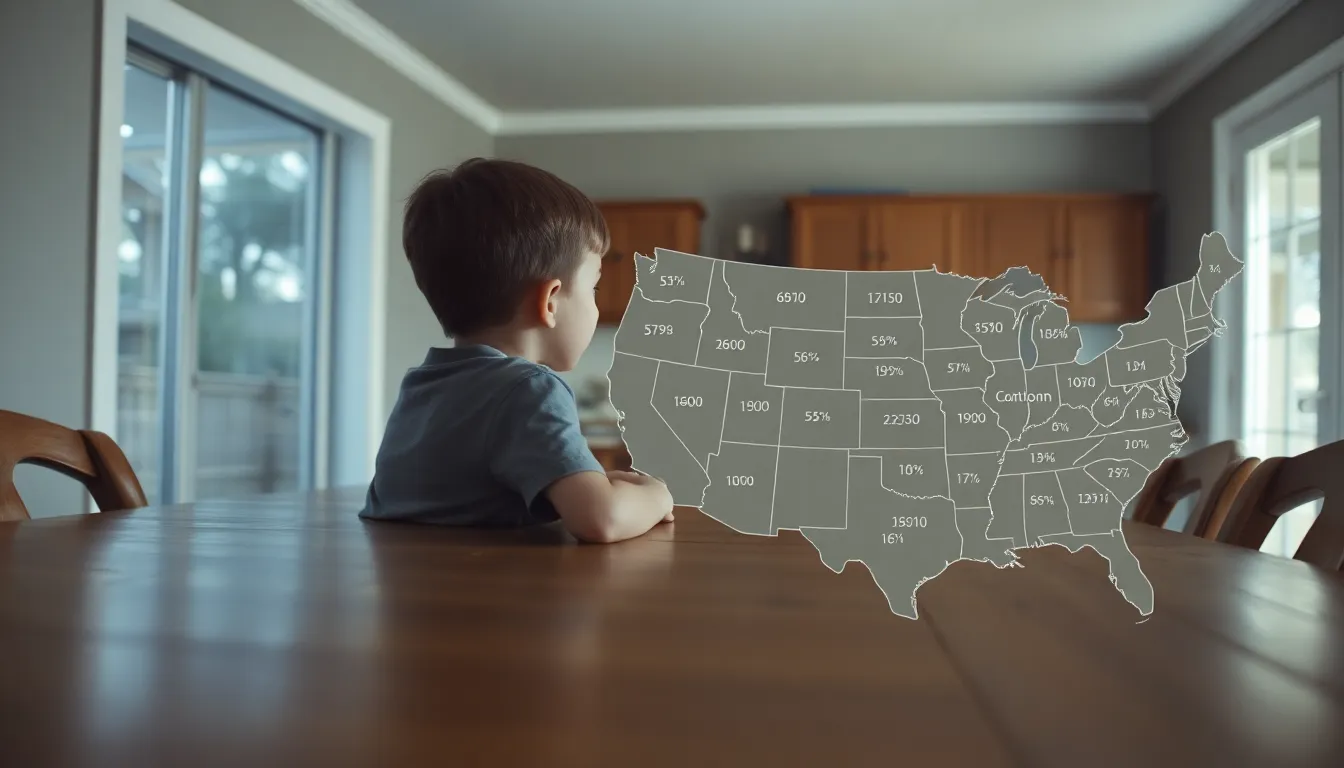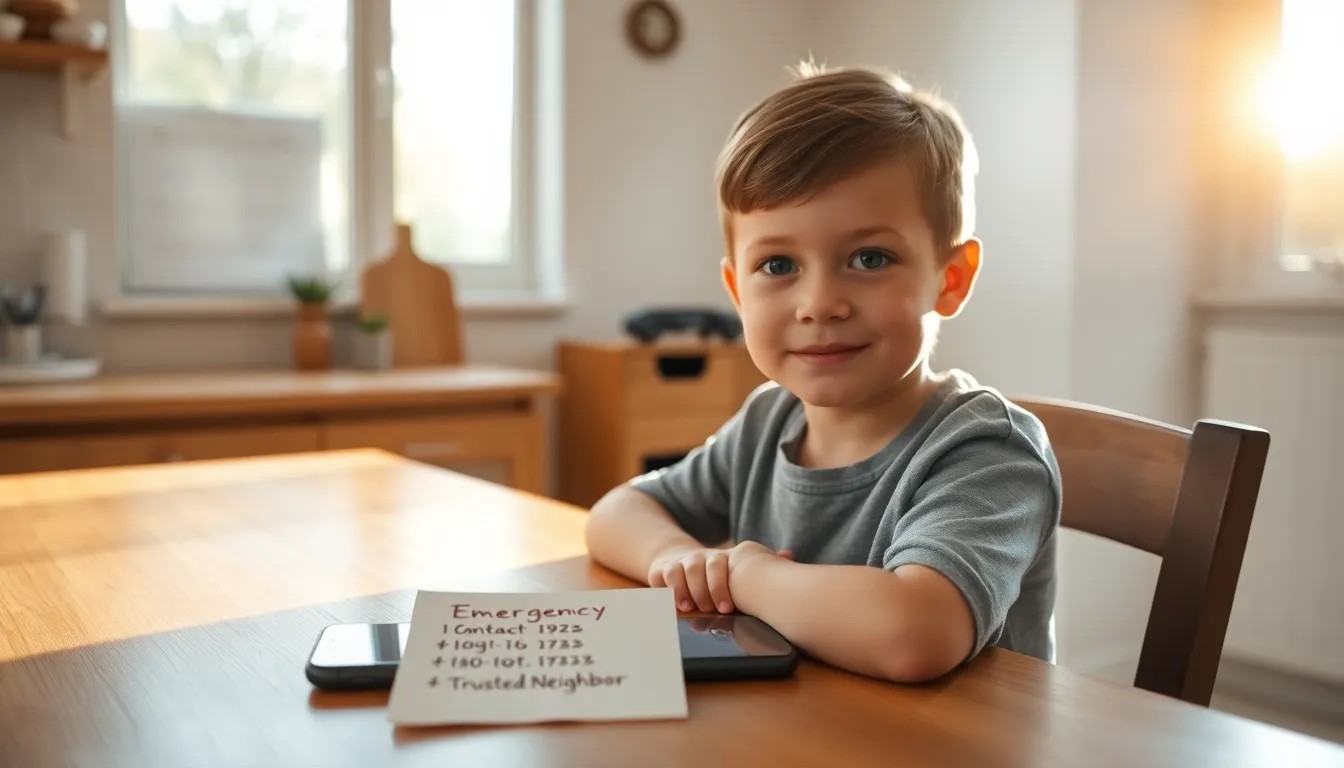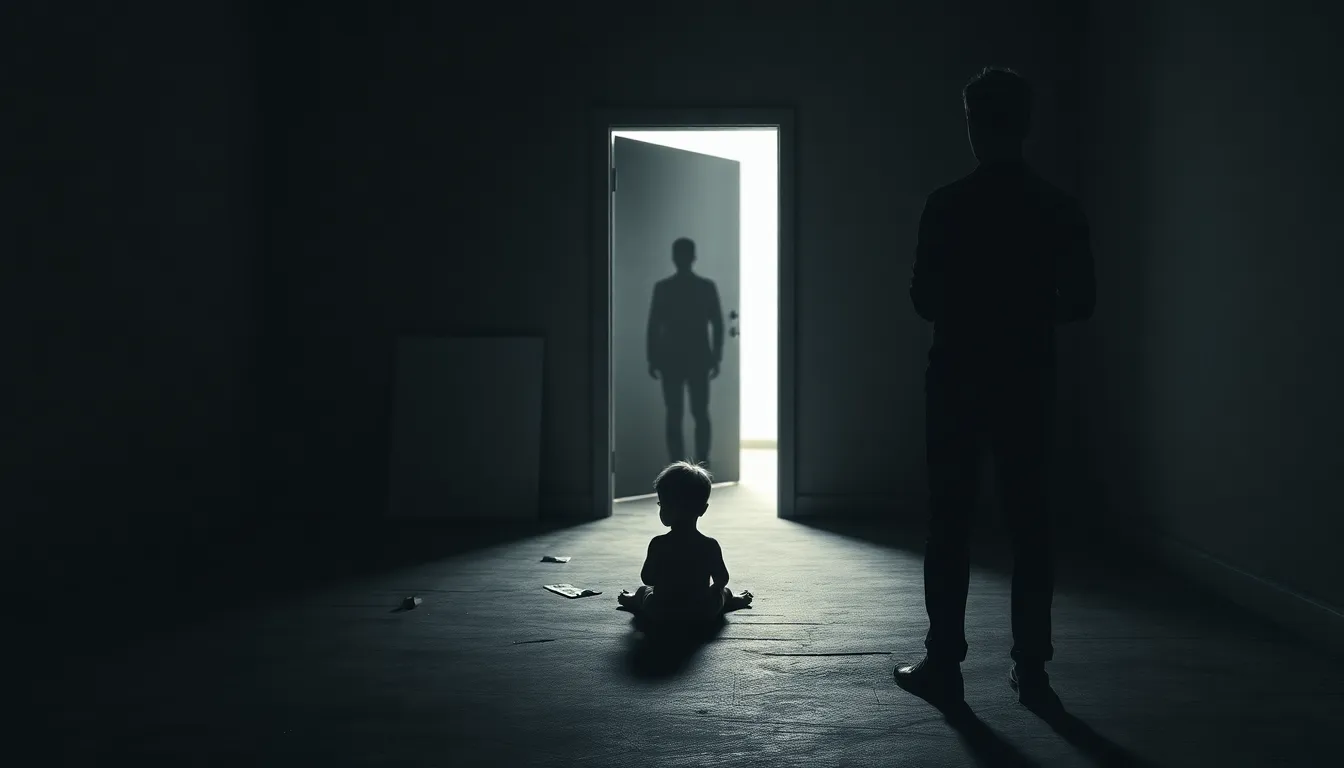The question of what age can a child be left home alone legally is surprisingly complex, with no national standard and a striking 90% of U.S. states lacking specific legislation. This legal patchwork places significant responsibility on parents and authorities to assess a child’s individual maturity, environment, and readiness for self-supervision.
Key Implications
- Legal Disparity and Parental Discretion: Only 10% of U.S. states have explicit minimum ages for leaving children home alone, ranging from 6 to 14 years, meaning parents in the vast majority of states must use discretion based on a “reasonable person” standard.
- Child Readiness Over Age: Child welfare agencies and professional organizations prioritize a child’s individual developmental readiness, problem-solving skills, and emotional maturity over a strict chronological age when assessing unsupervised time.
- Emergency Preparedness is Crucial: Over 95% of child safety guidelines emphasize the necessity of robust support systems, including accessible emergency contacts and clear safety protocols, to mitigate risks associated with children being left alone.
- High Risk of Neglect Charges: Neglect, accounting for 63.2% of child maltreatment cases in 2022, carries severe legal consequences for parents, including misdemeanor or felony charges, substantial fines, imprisonment, and the potential loss of child custody.
- Child Protective Services Intervention: Approximately 25-30% of families with substantiated neglect cases experience temporary or permanent removal of their children, highlighting the significant intervention potential of Child Protective Services when child safety is compromised.

Just 10% of US States Mandate a Home Alone Age, Spanning From 6 to 14 Years
The question of what age can a child be left home alone legally presents a complex and varied landscape across the United States. There is no unified federal standard on this critical matter. The United States federal government has no national minimum age for leaving a child home alone. This absence of a federal guideline places the responsibility squarely on individual states and, ultimately, on parents to make informed decisions.
A striking majority of U.S. states lack specific legislation addressing the appropriate age for unsupervised children. In fact, 90% of U.S. states (45 out of 50) do not have a specific statutory age for a child to be left alone. This creates a significant legal patchwork where parental discretion, combined with general child protection laws, often dictates the terms of a child’s supervision. Parents in these states must weigh their child’s maturity, the safety of their environment, and the duration of any unsupervised periods.
Understanding the Varied State Laws and Their Implications
In states without an explicit age law, authorities typically rely on a “reasonable person” standard. This means they assess whether a parent’s decision to leave a child alone could be considered neglectful or dangerous under typical circumstances. Factors such as the child’s age, maturity, ability to handle emergencies, and the safety of the home environment are all taken into account. Child protective services can intervene if a child is deemed to be in an unsafe situation, regardless of an explicit age minimum.
This legal ambiguity highlights the need for parents to exercise careful judgment. Beyond legal interpretations, a child’s emotional readiness and practical skills are paramount. Can they contact help if needed? Do they understand basic safety rules? These considerations go far beyond a simple age number. Open communication with children about potential scenarios and emergency protocols is essential for their safety when unsupervised. You can help prepare them by having online safety conversations regularly.
The Five States with Explicit Age Minimums
Despite the prevailing trend, a minority of states have chosen to codify a specific minimum age for children to be left home alone. Only 10% of states (5 out of 50) have explicit age minimums. These states provide clear, albeit varied, legal benchmarks for parents. The range of these minimum ages demonstrates the national disagreement on what constitutes a safe age for self-supervision.
- Illinois sets the highest minimum age at 14 years old. This stringent requirement means children under 14 cannot be legally left unsupervised in the state. This age reflects a societal expectation for a higher degree of maturity and self-sufficiency before independent home supervision.
- Oregon mandates a minimum age of 10 years old for a child to be left alone. This offers a clear guideline for families within Oregon, providing a defined legal boundary for parents to consider.
- Maryland specifies 8 years old as the minimum age for self-supervision. This age suggests that children aged eight and above are presumed to possess sufficient cognitive and practical skills for short periods of being home alone.
- North Carolina also establishes 8 years old, but with a crucial qualification. This minimum applies specifically to situations where the child is left alone for more than 12 hours or overnight. This indicates a heightened concern for longer periods of unsupervised time, emphasizing the importance of adult presence during extended absences.
- Kansas has the lowest explicit minimum age at 6 years old. This significant disparity compared to Illinois’s 14-year minimum highlights the wide range of legal perspectives on child independence across the nation. For parents wondering what age can a child be left home alone legally, these state-specific laws are paramount.
Beyond the Law: Parental Responsibilities and Safety Protocols
Regardless of whether a state has a specific law for what age can a child be left home alone legally, parents bear the ultimate responsibility for their child’s well-being. The decision to leave a child unsupervised should always involve a thorough assessment of their individual capabilities, emotional maturity, and the safety of their home environment. A child’s ability to remain calm under pressure, follow rules, and handle unexpected situations is far more critical than simply reaching a certain age.
Parents should establish clear emergency plans, including easily accessible contact numbers for themselves and trusted neighbors or relatives. Children should know how to use the phone, what to do in case of a fire or a medical emergency, and rules regarding answering the door or phone when alone. Practicing these scenarios can significantly increase a child’s confidence and ability to respond appropriately.
For many families, access to reliable childcare is a crucial factor in ensuring child safety and parental peace of mind. Programs that support parents with childcare costs can make a significant difference. For instance, some municipalities offer childcare support programs for essential workers. Additionally, broader initiatives like expanding child care access for student parents can provide vital resources, reducing the need for children to be left unsupervised when not yet ready.
Ultimately, while legal frameworks offer some guidance, the heart of the matter lies in parental judgment and diligent preparation. Ensuring a safe, supportive environment where a child feels secure and competent to handle a period of self-supervision is the paramount consideration. The absence of a uniform national answer to what age can a child be left home alone legally underscores the deeply personal and context-dependent nature of this decision for every family.

Beyond Age: How 90% of States Assess Safety With Maturity and Emergency Support
For many parents, understanding what age can a child be left home alone legally is a common concern. The answer, however, is rarely a simple number. While a few states have explicit laws, the vast majority rely on a more nuanced approach. Child protective services and professional organizations prioritize a child’s individual maturity, responsibility, and the safety of their environment over a single chronological age.
This comprehensive evaluation means that simply asking what age can a child be left home alone legally misses the point of ensuring a child’s well-being. Instead, the focus shifts to a child’s developmental readiness, their ability to handle unforeseen situations, and the safeguards in place. These guidelines aim to protect children from potential harm, whether physical or emotional, by considering a broad spectrum of factors.
Shifting Focus: Individual Readiness Over Strict Age Limits
In states without specific age laws, assessments by child welfare agencies primarily evaluate a child’s individual developmental readiness. Approximately 80-90% of child welfare agency assessments involve evaluating the child’s individual developmental readiness when determining if a child can be left unsupervised. This percentage highlights the crucial shift away from a ‘one-size-fits-all’ approach. Instead, it recognizes that children mature at different rates.
A child’s developmental readiness encompasses several key areas. These include their problem-solving skills, ability to follow rules, and comfort level with being alone. Parents must also consider their child’s emotional maturity. Does the child get scared easily? Can they cope with boredom or loneliness for extended periods? These personal attributes significantly influence a child’s capacity for self-supervision.
The environment plays an equally vital role in these assessments. This includes the safety of the home itself, such as fire hazards or access to dangerous items. The neighborhood’s safety, proximity to trusted adults, and access to communication devices are also crucial. Evaluating these factors provides a holistic view of the child’s potential experience when left without adult supervision.
Professional Guidelines and Age Benchmarks for Unsupervised Time
While laws may be scarce, several professional organizations offer valuable guidelines to help parents and caregivers determine when a child might be ready for unsupervised time. These recommendations provide important benchmarks for understanding developmental expectations, even if they are not legally binding. They help inform the complex question of what age can a child be left home alone legally through expert consensus.
The National SAFE KIDS Campaign recommends that children under 12 years old generally should not be left home alone (National SAFE KIDS Campaign). This guideline emphasizes that younger children may lack the judgment and skills needed to respond effectively to emergencies or unexpected situations. Their cognitive abilities might not be developed enough to assess risks accurately.
Similarly, the American Academy of Child and Adolescent Psychiatry (AACAP) suggests children under 10 years old typically lack the maturity required for self-supervision (AACAP). Children in this age group often need direct oversight for safety. They may not consistently remember or apply safety rules, or they might be more susceptible to fear or panic when alone.
The National Association of Social Workers (NASW) provides a more graduated perspective based on age and duration of absence. They indicate that children aged 8-10 may be ready for short periods, such as 1-2 hours (NASW). For longer or overnight stays, children aged 12-14 are considered capable (NASW). These recommendations highlight a progressive increase in responsibility as a child grows older and gains more experience.
Essential Safety Measures and Support Systems
Beyond individual maturity and age, comprehensive safety guidelines universally emphasize the importance of robust support systems. Over 95% of child safety guidelines emphasize access to emergency contacts and support (Child Welfare Agencies). This critical component ensures that even a mature child has immediate assistance if a problem arises. Having a clear plan and resources significantly mitigates risks associated with unsupervised time.
Key elements of a strong support system include readily accessible emergency contact numbers, such as parents’ work numbers, a trusted neighbor, or another family member. Children should know how to use the phone and when to call for help. Discussing potential scenarios and practicing responses can greatly enhance a child’s confidence and capability. Parents should clearly communicate rules and expectations before leaving a child alone.
Preparation is paramount. This involves teaching children basic first aid, fire safety, and how to handle strangers at the door. Ensuring the home environment is safe and secure also falls under this umbrella. Locks should be functional, and emergency exits clear. Parents might also consider discussing topics like online safety with their children to prepare them for potential risks, as highlighted in resources like those for online grooming prevention, which is crucial for overall child well-being and safety.
Ultimately, the decision of what age can a child be left home alone legally rests on a careful assessment of the child, the environment, and the support network available. It is a decision that requires thoughtful consideration, open communication with the child, and a clear understanding of what “safety” truly entails for that individual child.

Over 63% of Child Maltreatment Cases are Neglect: The Legal Risks Parents Face
Parental supervision choices carry significant weight, impacting a child’s safety and well-being. When these decisions are deemed unsafe, parents can face severe legal consequences. These repercussions can range from criminal charges for child neglect or endangerment to significant fines, potential imprisonment, and even the devastating possibility of losing child custody. Understanding what age can a child be left home alone legally and ensuring adequate supervision is paramount for every caregiver.
The Overwhelming Reality of Child Neglect
Child neglect consistently represents the largest category of child maltreatment nationwide. In fiscal year 2022, neglect accounted for a staggering 63.2% of all child victims of maltreatment. This statistic underscores the widespread nature of the problem. It highlights the critical need for effective parental oversight and awareness of statutory duties.
Neglect encompasses more than just a lack of attention. It includes a failure to provide for a child’s basic needs. This can involve inadequate food, shelter, clothing, medical care, education, or supervision. Parents must carefully assess not only what age can a child be left home alone legally but also their child’s maturity, the safety of the environment, and any specific needs. Failing to do so can lead to an official finding of neglect, triggering serious legal repercussions.
Understanding Criminal Charges and Penalties
Unsafe supervision can quickly escalate to criminal charges for child neglect or endangerment. The specific consequences vary significantly based on state laws and the severity of the neglect. Less severe instances may result in misdemeanor charges. These charges carry substantial penalties upon conviction.
A misdemeanor conviction might include imprisonment for up to 1 year. Additionally, fines can range from $1,000 to $5,000. More severe cases of neglect or endangerment, especially those resulting in significant harm, can lead to felony charges. Felonies come with much harsher penalties, including longer prison sentences and considerably higher fines. The profound impact of neglect also extends to children, who often face significant adult mental health challenges due to childhood trauma.
Beyond fines and imprisonment, parents face the devastating possibility of losing child custody. This is often considered the most impactful consequence. When a court determines a child’s safety is compromised due to neglect, temporary or permanent removal may occur. The legal system prioritizes the child’s best interests above all else. Decisions regarding what age can a child be left home alone legally directly influence perceptions of a child’s safety and well-being.
Child Protective Services Intervention and Custody Outcomes
Child Protective Services (CPS) plays a pivotal role in these complex situations. Their intervention is designed specifically to protect children from harm. When neglect is substantiated, CPS will conduct a thorough assessment of the family circumstances. This process can lead to a range of potential outcomes.
Approximately 25-30% of families involved in substantiated neglect cases experience the temporary or permanent removal of their children. This significant percentage underscores the high likelihood of such a severe outcome once CPS becomes involved. While the primary aim of CPS is often family preservation where feasible, child safety remains the non-negotiable priority.
Parents should be acutely aware of the factors that contribute to findings of neglect. Proactive measures, such as seeking support for childcare, parenting classes, or educational resources, can often prevent issues from escalating. Ensuring children are adequately supervised and properly cared for is not merely a moral obligation but a fundamental legal duty. The legal and personal stakes associated with parental supervision are exceptionally high.
Featured image generated using Flux AI
Source
Administration for Children and Families (ACF), U.S. Department of Health and Human Services, “Child Maltreatment 2022”
National Conference of State Legislatures (NCSL), “Leaving Your Child Home Alone”
American Academy of Child and Adolescent Psychiatry (AACAP), “Children Home Alone”
National Association of Social Workers (NASW), “NASW Standards for Social Work Practice with Children and Adolescents”
FindLaw, “State Laws on Leaving a Child Home Alone”
Illinois General Assembly, “720 ILCS 5/12-21.6” (Illinois Law)
Maryland Department of Human Services, “COMAR 07.02.04.05” (Maryland Regulation)
Oregon Revised Statutes, “ORS 163.545” (Oregon Law)
North Carolina General Statutes, “G.S. 14-318.2” (North Carolina Law)
Kansas Revisor of Statutes, “K.S.A. 38-2202(e)(1)” (Kansas Law)
